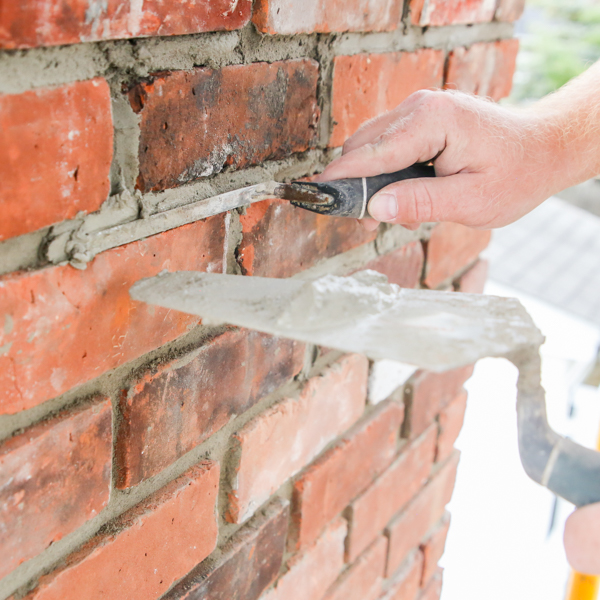Professional Siding Contractor Services to Increase Aesthetic Appeal
Professional Siding Contractor Services to Increase Aesthetic Appeal
Blog Article
Opening the Secrets of Lasting Masonry Building And Construction Practices for Eco-Friendly Structures
In the world of modern-day construction, the search of sustainable methods has actually ended up being vital. Among the myriad techniques to environmentally friendly structure, lasting stonework building attracts attention as a time-tested and durable approach that holds a wealth of untapped possibility. From the option of products to innovative construction techniques, the keys to accomplishing sustainability within stonework building are complex and fascinating. By exploring the advantages, materials, methods, and future trends of sustainable stonework, a deeper understanding of just how these techniques can form the future of eco-friendly buildings arises.
Advantages of Lasting Masonry Building
Welcoming lasting stonework building practices not just minimizes ecological impact yet also supplies long-term financial benefits to home builders and communities. By making use of products like recycled bricks, blocks, and stones, builders can significantly reduce the carbon impact of their projects while promoting source performance. Additionally, sustainable masonry construction strategies, such as correct insulation and thermal mass properties, can boost power effectiveness within structures, bring about decreased functional costs gradually.
Moreover, the sturdiness and resilience of masonry frameworks add to long-term economic benefits. Buildings constructed making use of lasting masonry techniques commonly require less repair and maintenance, converting to set you back savings for builders and property owners. The long life of stonework materials additionally ensures that frameworks stay secure and protected, decreasing the requirement for regular restorations or substitutes.
Eco-Friendly Stonework Materials
Making use of environmentally friendly stonework materials is a crucial step towards boosting the sustainability of construction methods and reducing environmental effect while optimizing long-term financial advantages. Sustainable stonework materials are sourced, generated, and used in a manner that decreases overall ecological impact. Sustainable concrete obstructs integrate recycled accumulations and might feature better insulation residential or commercial properties, contributing to energy performance in structures.
In addition, natural materials like adobe, rammed planet, and straw bundles provide exceptional thermal mass residential or commercial properties, lowering the need for heating and cooling power. These materials are frequently in your area readily available, advertising local economic climates and minimizing transportation-related carbon exhausts. By choosing environmentally friendly stonework materials, construction tasks can substantially reduce their ecological impact and add to the development of much healthier, more sustainable built settings.
Energy-Efficient Stonework Methods
Power performance plays a vital function in enhancing the sustainability of stonework building and construction techniques. One crucial energy-efficient masonry strategy is the usage of thermal mass, which includes including thick products like concrete or block into the building's structure to soak up and save warm.

Technologies in Sustainable Stonework
Recent innovations in lasting stonework practices have actually brought about ingenious methods that are improving the building and construction market. One such advancement is the development of self-healing concrete, which makes use of bacteria embedded within the concrete to recover fractures autonomously. This advancement not just decreases maintenance costs yet likewise improves the toughness of masonry structures, adding to their sustainability.
An additional notable development is making use of recycled aggregates in stonework construction - masonry contractor. By incorporating products such as crushed ceramic waste or recycled glass into concrete mixes, builders can decrease the environmental impact of building and construction tasks while keeping architectural stability. This method not only diverts waste from garbage dumps but likewise saves all-natural resources, making it a crucial development in lasting stonework construction
Furthermore, the assimilation of electronic style tools, such as Building Details Modeling (BIM), is reinventing the means stonework structures are intended and created. BIM enables more accurate computations, minimized product wastefulness, and improved energy efficiency, inevitably leading to even more sustainable structure methods. These advancements collectively signify an appealing future for sustainable masonry building and construction in the age of environmentally friendly structures.
Future Trends in Stonework Sustainability
With the ingenious strides made in lasting stonework practices, the future fads in masonry sustainability are poised to additional revolutionize the building sector. Among the vital trends forming the future of stonework sustainability is the boosted assimilation of technology. Improvements such as Building Details Modeling (BIM) and online truth simulations are being utilized to optimize stonework construction procedures, resulting in minimized material waste and enhanced power effectiveness in buildings.
In addition, the development of unique lasting materials is readied to play a substantial duty in improving the eco-friendliness of masonry building. masonry contractor. Technologies like self-healing concrete, recycled accumulations, and chimney flashing and cap repair bio-based binders are obtaining traction for their ability to minimize ecological influence while maintaining architectural integrity

Verdict
In final thought, sustainable masonry building practices use countless advantages for green buildings. masonry contractor. Innovations in sustainable stonework are continually being developed to additionally boost the environmental performance of buildings.
Report this page